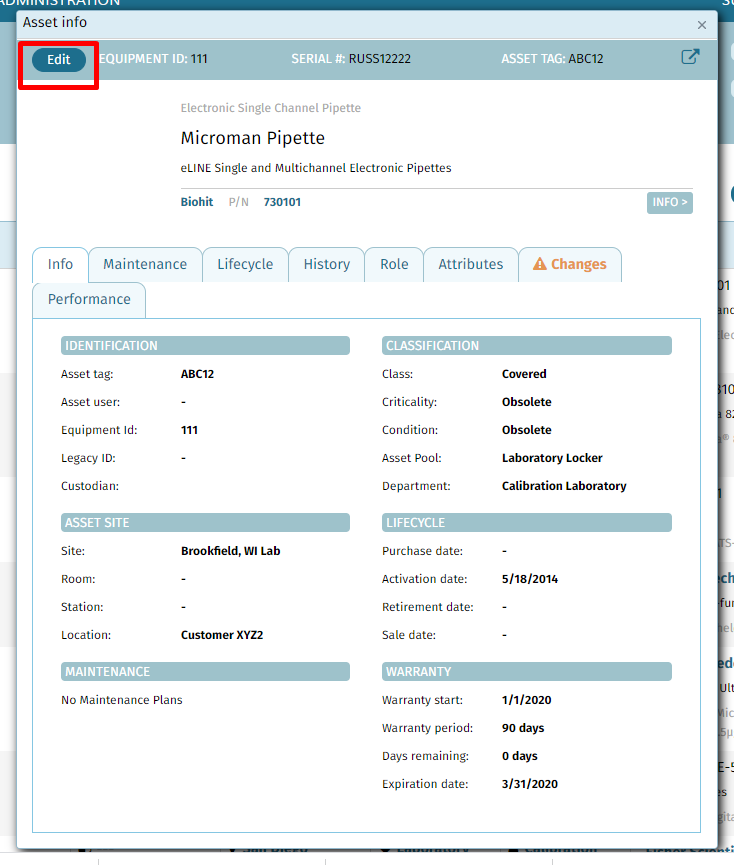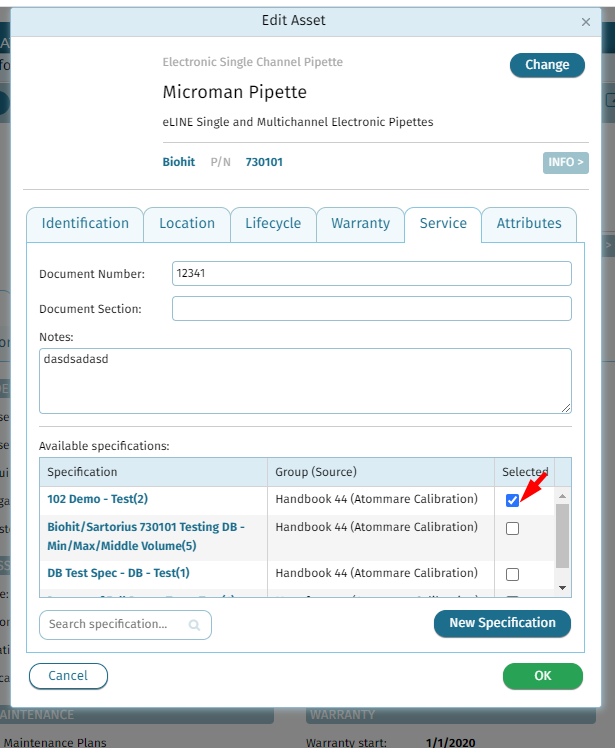*This is a "Feature Updates" article. If you need to get actual instructions, please go to the "How to Create a Product Specification" article.
Workflow
To begin configuring specifications, select “Product Specifications” from your PRODUCTS module:
Next, select “Add Product Specification” from the toolbox on the right-side of your screen to select a product to link to the specification:

Now, search the product catalog for the product model the specification is being created for. Once the product is found, select the model and click the green “Select” button on the bottom of the screen:
Hint: If you would like to add generic specifications for a product category, choose Add Generic Specification instead and select the category of products the specification should be available for.
See (https://qualer.freshdesk.com/support/solutions/articles/6000244276-how-to-create-generic-specification )
Enter a main title of the specification then a subtitle. Use the drop downs on the right to specify if this is for a customer or a general specification that can be used for all customers (in this case, that means choosing Atommare Calibration). Then specify the group (ie Manufacturer, Customer, Handbook 44 spec). If the desired group is not there, click the pencil icon to create a new one. When finished, hit Save:

Now that the spec has been created, points can be added. First choose if the spec should be force and/or fit (see https://qualer.freshdesk.com/support/solutions/articles/6000199546-additional-measurement-form-options). Then click "Add new record":

Fill in the function name that matches the measurement parameter from the service level corresponding to this instrument type. Then name the specific test point being created by filling out "Specification." Next, choose the desired quantity/parameter and unit of measure:

You can now choose from 6 different specification types: Percentage of Measured Value, Tolerance Range, Offset from Measured Value, Percentage + Count of Resolution, Parts Per Million of Measured Value, and Parts Per Million + Count of Resolution.
- Percentage of Measurement Value: See image above. Here, enter the value being measured (i.e. 100 grams) and then assign an accuracy the measurement will measure against (i.e. +/- 5%). This would mean any value between 95 grams to 105 grams is acceptable.
- Tolerance Range: To set up this type of specification, select a reference value (i.e. 100 grams) and now instead of choosing a percentage, tell the system a specific range that would be acceptable (i.e. 95-105).

- Offset from Measured Value: To set up this type of specification, select a reference value (i.e. 100 grams) and then tell the system an offset value. If the acceptable range was 95-105 grams this would mean the offset would be +/- 5 grams.

- Percentage + Count of Resolution: To set up this type of specification, you would first choose a specification low limit (i.e. 0 grams) and a specification high limit (i.e. 100 grams). Next, enter the resolution of your equipment (i.e. 0.01 grams). Then, assign the acceptable tolerance percentage (i.e. 5%) and the count of resolution in this case, "2 counts" (this would be mean your tolerance would be +/-5% +2 (measurement resolution).

- Parts Per Million of Measured Value: To set up this type of specification, select a reference value (i.e. 100 grams). Next choose the accuracy in parts per million (i.e. 500) which would calculate to +/- 0.0005 grams.

- Parts Per Million + Count of Resolution: To set up this type of specification,choose a specification low limit (i.e. 0 grams) and a specification high limit (i.e. 100 grams). Next, enter the resolution of the equipment (i.e. 0.01 grams). Then, assign the acceptable tolerance in parts per million (i.e. 500) and the count of resolution in this case 2 (this would mean your tolerance would equal +/-0.0005 +2 (measurement resolution)).

Lastly, after configuring the specification point, select the green “OK”. Continue to add any additional test points. Finally, click Save.
To assign your newly created specification to an asset navigate to the desired asset within the asset manager / client asset manager / managed assets screens. Click on the asset serial number/asset tag/equipment ID to open up the 'Asset Info' screen. Click the blue 'Edit'




